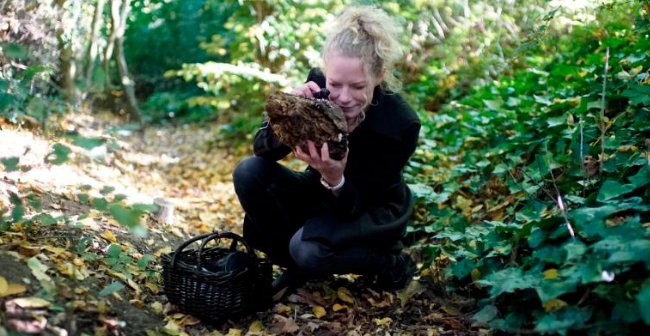
It’s a sunny morning, and Sara Landvik is working in the wild parts of Hampstead Heath. She studies the soil, the trees and their roots in search of fungi, because long walks like these are actually part of her job. She regularly goes out in hope of discovering new fungal species hidden deep in the dirt or high among the trees.
“We want to collect as many different species of fungi as possible,” said Landvik, a fungi scientist. The organisms can benefit humankind in the production of food and alcohol, drugs, biofuels, washing detergents and even a famous childhood toy: LEGO. Their nutritional value shouldn’t be overlooked, however. There are about 350 species of edible fungi. They can reduce the chance of diseases such as cancer and heart disease.
There are as many as 3.8 million kinds of fungi worldwide—though only about 144,000 have been discovered, according to this year’s State of the World’s Fungi report. New ones are found by searching forests, collecting soil samples and bringing them back to the lab to be studied, Landvik says.
In the wild, fungi are not able to move, so they compete against other fungi or bacteria for resources. Once fungi reach the laboratory, Landvik says, they are cut into pieces, which are then put into a liquid of nutrients such as minerals and vitamins and a carbon source to help the fungi grow. It’s like a “lottery ticket”, she says, as each discovery could turn up “something that can make a difference in the world, something that we can make a greener industry possible, and so on.” More famous is the discovery of penicillin in 1928, discovered when Alexander Fleming was sorting out his Petri dishes after a holiday and saw a blob of mold had grown.
本时文内容由奇速英语国际教育研究院原创编写,未经书面授权,禁止复制和任何商 业用途,版权所有,侵权必究!(投稿及合作联系:微信:13350077298 QQ:757722345)
1.Why does Sara Landvik often go to the wild?
A To collect the soil.
B To plant many trees.
C To look for new fungi.
D To go for long walks.
解析:选C。细节理解题。根据第一段最后一句She regularly goes out in hope of discovering new fungal species hidden deep in the dirt or high among the trees.可知她经常到野外去是为了寻找新的真菌。故选C。
2.Which of the following is NOT true about fungi?
A They can benefit people in the production of daily essentials.
B They can provide people with some necessary nutrition.
C There are about 350 species of fungi that are suitable for eating.
D They can cure diseases like cancer and heart disease.
解析:选D。细节理解题。根据第二段最后一句They can reduce the chance of diseases such as cancer and heart disease.可知真菌只能帮助人们降低患诸如癌症、心脏病等疾病的风险,并不能治愈这些疾病。故选D。
3.What can we learn from Paragraph 3?
A People have found most of fungi around the world.
B Finding new species of fungi is not so easy.
C All new species of fungi are found in the forests.
D There is no need to study the soil samples in the lab.
解析:选B。推理判断题。根据第三段第二句的New ones are found by searching forests, collecting soil samples and bringing them back to the lab to be studied可知要通过将在森林中搜寻的土壤标本带回实验室研究才能够发现新的菌类,由此可知发现新真菌的过程并不容易。故选B。
4.Why does the author mention the discovery of penicillin?
A He wants to get a lottery ticket like Alexander Fleming.
B He wants to show Alexander Fleming is great.
C He wants to prove every new discovery in fungi may make a difference to human.
D He wants to tell us how Alexander Fleming found penicillin.
解析:选C。目的意图题。根据最后一段第三句It’s like a “lottery ticket”, she says, as each discovery could turn up “something that can make a difference in the world, something that we can make a greener industry possible, and so on.”可知每一个关于真菌的发现都可能对世界产生非凡的意义,因此可推知作者提到发现青霉素的例子只是为了对其进行佐证。故选C。